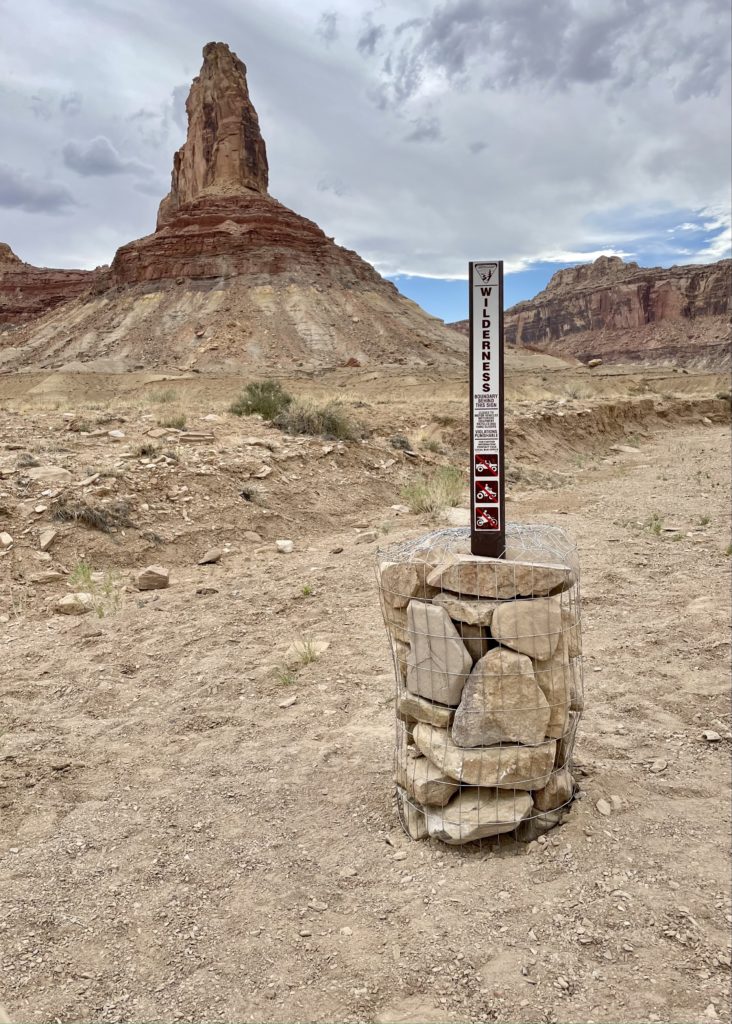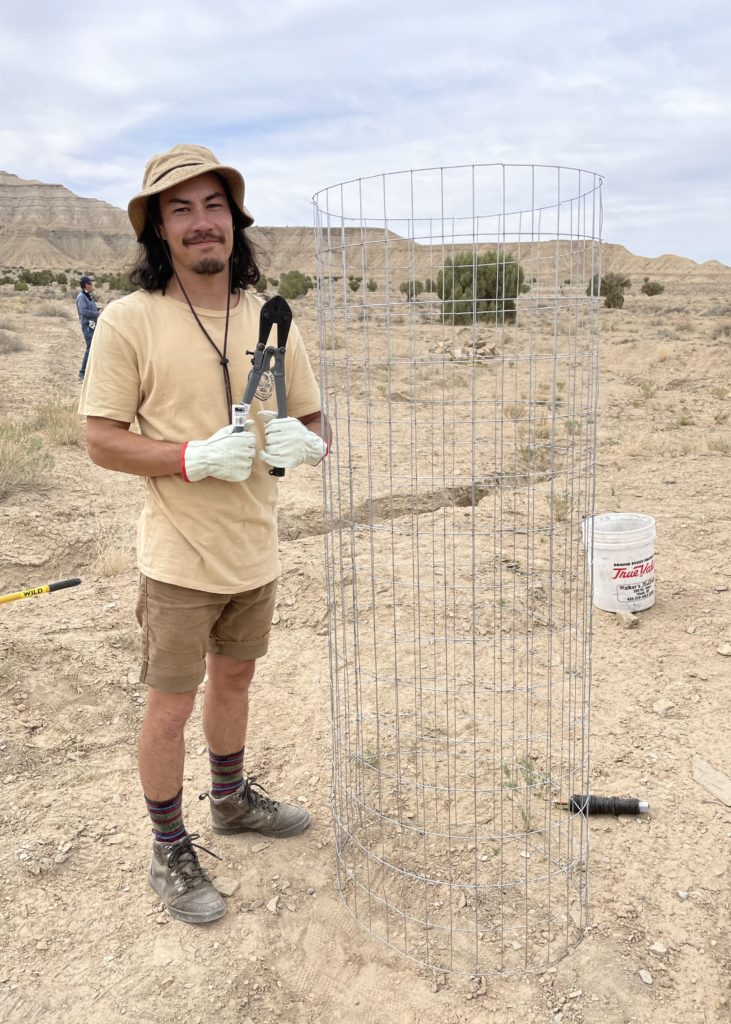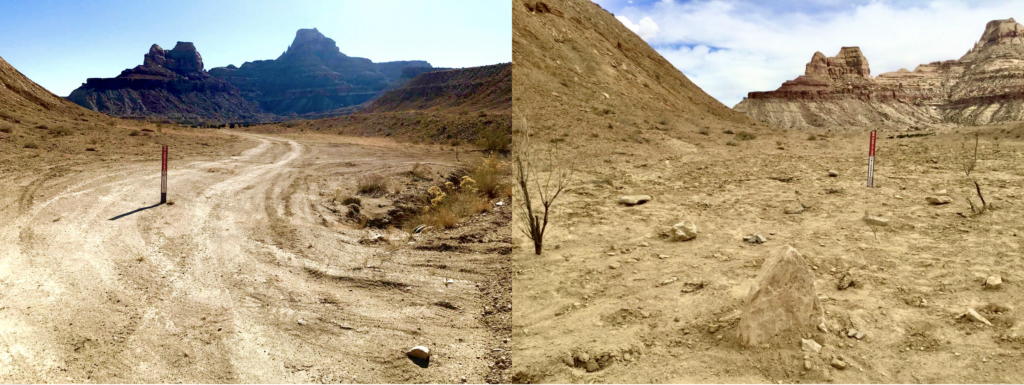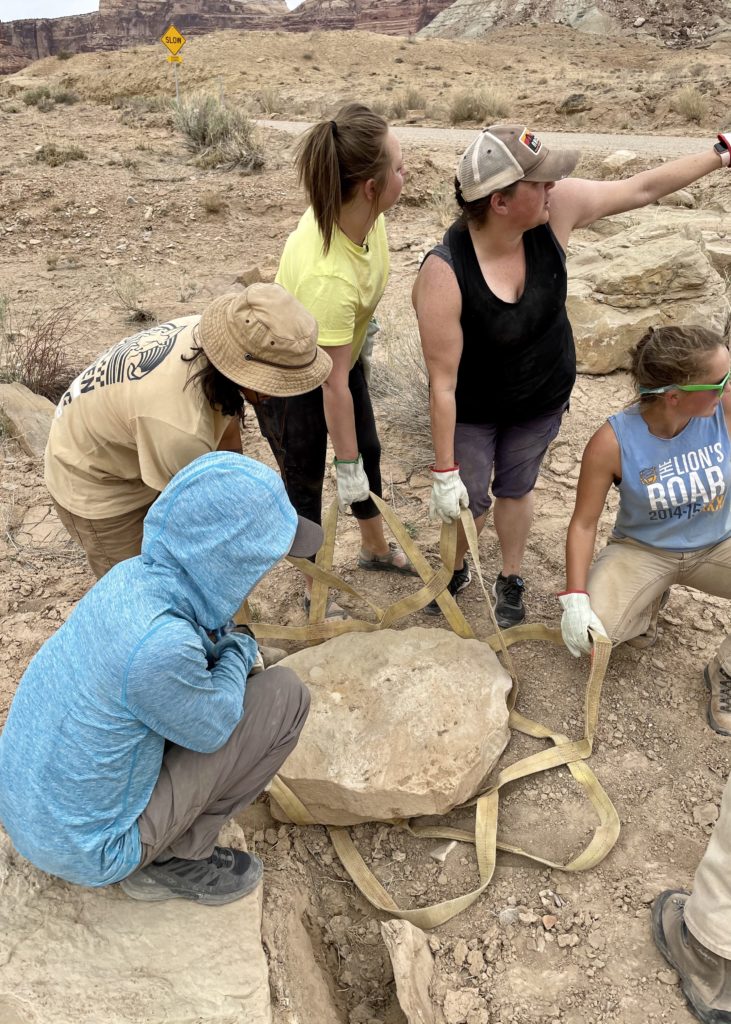Thanks to the steady and persistent work of our Wildlands Team and more than a half-decade of service expertise gained by our Stewardship Program, SUWA has successfully catalyzed overdue protection efforts for the diverse landscapes in the San Rafael Swell designated as wilderness over two years ago through the John Dingell, Jr. Conservation, Management and Recreation Act.

Making Progress on the Ground
This spring we began working with the Bureau of Land Management’s Price field office—the office tasked with ensuring the integrity of those lands designated as wilderness: Muddy Creek, Labyrinth Canyon, Mexican Mountain, and many more of the San Rafael Swell’s iconic landscapes. The approach and processes we developed and continue to hone are concise, long term, and no-nonsense. Beginning with the foundation of years of data collected during fieldwork conducted by Wildlands Field Director Ray Bloxham, we rely on SUWA’s GIS team to incorporate this data into interactive maps identifying critical needs on specific public lands. Our Stewardship Coordinator Jack Hanley then revisits these sites with an attending BLM Ranger to assess, describe, and propose site-specific work plans to shore up wilderness boundaries and ensure that the impacts of ORV travel and dispersed camping are addressed head-on.
This groundtruthing and collection of data then produce formal work proposals specific to a designated wilderness area. This spring, we targeted our efforts along the eastern and western boundaries of the Mexican Mountain Wilderness, as well as locations along the eastern flank of Sid’s Mountain Wilderness. After two trips and over 200 volunteer hours committed, we’ve completed stage one protections aimed at ORV compliance in these designated wilderness areas. Currently and through the summer, we are in the midst of scoping the San Rafael Reef Wilderness, with plans for multiple fall projects beginning with a run of three weekends in September and October surrounding National Public Lands Day: September 11/12, September 25/26 (National Public Lands Day), and October 2/3. And, already in the pipeline, we have plans to move forward into the Labyrinth Canyon Wilderness in the spring of 2022 and Muddy Creek Wilderness in the fall of 2022.

An Interdisciplinary Approach
Once our proposal has run the gamut of BLM resource specialist approvals, we then design, schedule, recruit, and execute a series of stewardship projects with field crews consisting of SUWA members, new supporters, Emery County Public Lands Council members, BLM representatives, and SUWA staff. These projects are the heart of our program, the most public aspect of our work, and emblematic of what we do. However, they are notably and importantly the culmination of diverse and persistent work within our Stewardship Program and across SUWA’s Wildlands, GIS, and Legal Teams prior to and following these flagship events. Years in the making and with years of work ahead, our hands-on work implementing wilderness projects in the Swell is undoubtedly a team effort.

The Work
While on the ground in the Swell, our first approach is minimalism: raking out tracks, removing campsites, and naturalizing the landscape by strategically placing downed brush and boulders. In some cases, we employ cairn basket building—a process by which wilderness signs are housed in a cylindrical, four-foot-tall wire mesh basket filled with locally-sourced rock. The signs are drilled at the base where wire is run through and around a small boulder. Both a preventative measure for sign removal or destruction and an educational tool, you will find these installations in washes and at the junction of former illegal routes. Once installed, we recruit additional volunteers to monitor these sites for impacts and inform our Stewardship Team of up-to-date conditions. This is a key component of our growing Wilderness Stewards Program.
Yet, as robust as our initial strategies are—95 percent of our work has endured the onslaught of the recent Memorial Day Weekend crowd—we recognize that these endeavors are merely the first offensive in a years-long drive to support SUWA’s broader effort to ensure long-lasting and effective management of wilderness in the Swell. As recreation and travel plans are shaped and implemented, and as the impacts of industrialized recreation create new challenges for wild places, we know that our stewardship work will require consistent and timely review, redesign, and reinforcement. In other words, where wilderness is concerned, it is a fact that—to ensure effective protections—we must be in this for the long haul. 2021 is the first year of many that our staff and crews will manifest a new paradigm of management on the landscape. In the years that come, we hope that you and others will join us in ensuring that our work becomes the standard by which all wilderness-quality lands are protected and defended across Utah and the West.
Visit our website and Apply Today!


